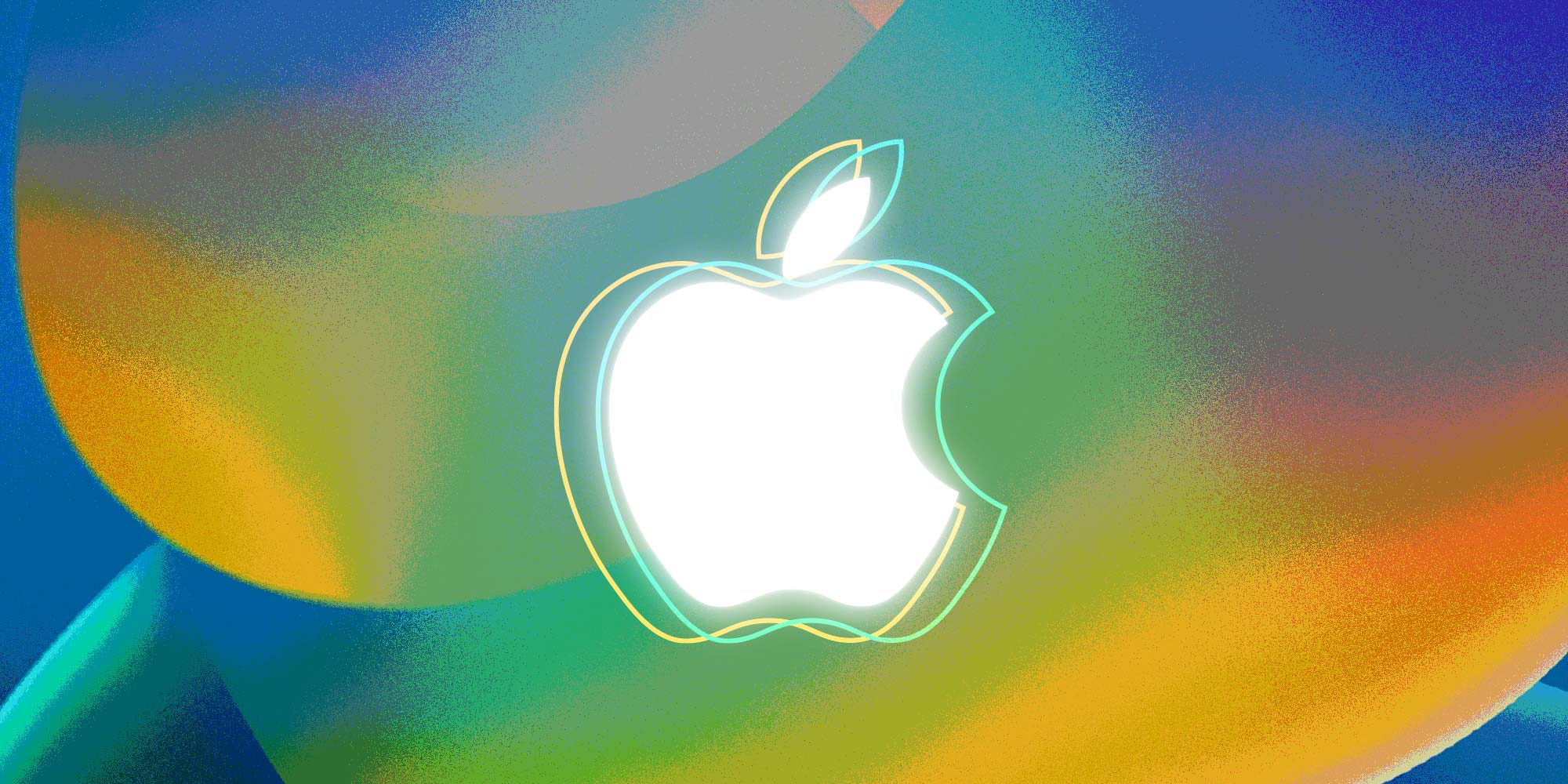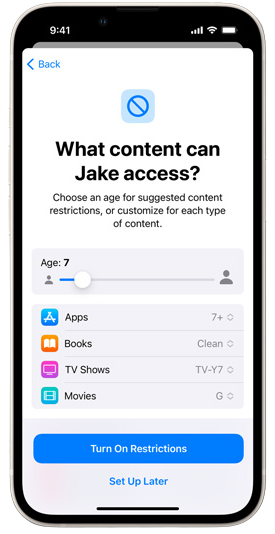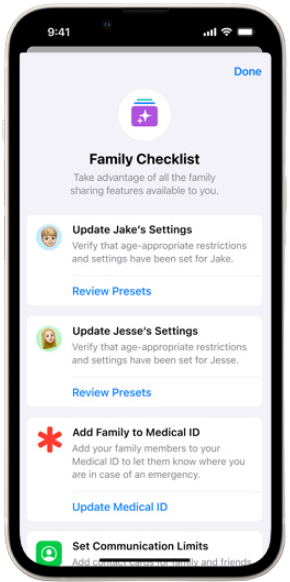Apple recently released iOS 16, and with it came significant upgrades to its parental controls.
While filters on their own aren’t a replacement for the necessary open, honest, and ongoing conversations parents should have with their kids about porn and sex, they can help.
Apple first introduced Screen Time—the name for its parental control features—in 2018, but it hasn’t always been an intuitive, easy-to-use tool for parents. Given that nearly 90% of teens in the US have an iPhone, the new features in iOS 16 are relevant and critical to help parents in their efforts to keep kids safe.
And if you don’t want your child to have an iPhone? Check out our affiliates at Pinwheel.
So what’s changed with Apple’s new parental controls? Let’s take a look.
Improvements to Apple’s “Screen Time” parental controls
Screen Time used to be somewhat arduous and confusing for parents to set up, with 30+ steps required to turn it on. It was also missing some important features that the iOS 16 update addresses.
Here’s a list of the latest updates with iOS:
Default to age-based content settings.
When you add a child to Screen Time, Apple will now as default select parental control features based on the child’s age. Parents can always change this in the settings, but it’s definitely a helpful starting point in determining what children may have access to in apps, books, TV shows, movies, and more.
These default settings are suggestions from Apple, but each family should consider what’s appropriate for their child. The settings are set up as a “slider” that can be moved to change the presets.
It’s also important to note that the age-based presets are not an automatic default on a minor’s device, but are a default through Screen Time. This means that an adult has to set up Family Sharing and Screen Time on the child’s device in order for this feature to work.
Family Checklist
This iOS16 feature showcases available parental controls to ensure families know everything they can utilize.
The Family Checklist also includes tips and periodic suggestions that remind parents to check settings and make any necessary changes or updates based on what’s best for their child.
Family Sharing is now part of Quick Start.
This means that when someone sets up a new iPhone or iPad for a minor, they can bring an existing device close to the new one to quickly add previously selected Family Sharing and Screen Time settings. This helps streamline the process by restoring or duplicating previous parental controls.
Family Sharing is now at the top in iOS16 and on iPad settings.
This keeps parental control features at the forefront of parents’ minds, reminding them to prioritize and stay up to date with their child’s device settings.
NCOSE suggestions for Apple
Apple giving parents more power and options to protect their kids on their devices has been extremely helpful for so many families. This is a big step forward for online safety advocates, but some safety advocates say there’s still a long way to go.
Here are a few more suggestions The National Center on Sexual Exploitation would like to see Apple implement:
- Default iPhones and iPads to the highest safety settings for minors based on Apple ID—not just through Screen Time.
- Create more parental control over iMessage. Unfortunately, iOS16 actually has features that can make iMessage more risky for kids—like the ability to edit, unsend, or mark messages as “unread.” This can make it easier for kids to hide activities like sharing nudes.
- Fix the app rating system to accurately reflect the known and potential risks on certain apps.
- Give parents the option to be notified if their minor has sent or received sexually explicit images through iMessage. Currently parents can turn on the Communication Safety feature through Screen Time (it is off by default and not available outside of Family Sharing). Children receive warnings, but parents are not alerted.
- Scan for previously confirmed and hashed child sex abuse images (CSAM) at the device level before being uploaded to iCloud.
Additional considerations for parents
NCOSE offers a few more considerations parents should be aware of when it comes to their child’s devices.
First, ratings on the Apple App Store and Google Play are notoriously inaccurate and misleading. For example, Instagram, Snapchat, and TikTok are rated 12+, but these social media platforms are rife with predators and harmful content easily accessible to children.
So parents should seek out other sources of information (like NCOSE or Protect Young Eyes) before approving certain apps on their child’s device.
Second, podcasts, music videos, lyrics, and album covers are included with “music” and sexually explicit material in these areas is not blocked even with a lower age/higher safey setting.
Of course, no parental controls are perfect or a replacement for ongoing conversations about the responsible, healthy use of technology. Clear, consistent, and constructive communication between caregivers and children is essential—device monitoring and filtration simply isn’t a guaranteed or permanent solution.
Let’s Talk About Porn
Kids are curious about sex. Spoiler alert: this is normal and healthy! What’s not healthy is going to porn for all the answers.
The days when parents could quickly have a brief, one-time “talk” about the birds and the bees are over. Today, children are repeatedly exposed to increasingly explicit sexual content, requiring parents to have multiple open and direct conversations about the differences between healthy sexuality and its cheap, unhealthy imitations.
There may be some awkwardness at the beginning, but as you make it a regular discussion, it will get easier.
The majority of kids are exposed to porn by age 13, with some exposed as young as seven according to a 2020 survey.British Board of Film Classification. (2020). Young people, pornography & age-verification. BBFC. Retrieved from https://www.bbfc.co.uk/about-classification/researchCopy So many kids under the age of 18 have been exposed to hardcore pornography, and once they’ve been exposed, many keep coming back. Many men report consuming porn, between 91–99% in this one study, and between 60–92% of women admit the same.Solano, I., Eaton, N. R., & O'Leary, K. D. (2020). Pornography Consumption, Modality and Function in a Large Internet Sample. Journal of sex research, 57(1), 92–103. https://doi.org/10.1080/00224499.2018.1532488Copy This is real cause for concern.
It’s no longer a question of if your child will be exposed to pornographic material online, but when.
If you’re looking for a “quick fix” to this issue, the truth is, there isn’t one. Filters or parental controls alone aren’t a complete solution to combating porn and exposure to explicit content.
Of course filters can help, but it’s clear that they’re not a complete or perfect solution. Even the best protection can be bypassed, and porn is very, very accessible. The most important thing any caregiver can do is to make sure children are educated about the harms of pornography in a supportive and shame-free way and they know they can talk to you if and when they do encounter something.
Think about talking with your kids about porn earlier than you might have initially anticipated. Whether they’re teenagers or elementary schoolers, there are ways to discuss internet porn in age-appropriate ways.
It may seem scary, uncomfortable, or awkward at first, but there are resources available to help guide you. In fact, that’s why we’ve created an interactive, step-by-step conversation guide website, Let’s Talk About Porn.
This free conversation guide resource can be personalized to help walk parents, friends, partners, kids, strangers—really, pretty much anyone—step-by-step through having a conversation about porn.
Keep conversations shame-free, open, and honest
When kids feel like their parents are knowledgeable, loving, judgment-free, and willing to answer their questions, they’ll be more likely to approach the subject whenever it comes up rather than hiding their curiosity and searching for it on their own—something that can fuel a long term struggle, in many cases.
And if an adolescent is already involved with porn, it’s important to help ensure they have access to what they need for continued education about how it can harm and recovery resources, if necessary.
We also recommend watching our three-part documentary series for free, and checking out our affiliates at Bark—an easy-to-use, smart tool that parents can use to filter and help protect their children online. Bark uses filters and a highly advanced algorithm to block inappropriate content and also alert parents when it detects porn site visitation as well as potential threats or signs of danger or risky behavior.
Also, if you’re uncertain about iPhones for your family, check out our affiliates at Pinwheel—designed in collaboration with therapists and child-development professionals, Pinwheel phones have vetted apps to give kids and teens the tools they need without distraction.
When you’re equipped with the facts about pornography and its negative effects as well as the pros of healthy relationships, and have resources to offer your child, you can be a constant, trusted place for them and help them navigate through whats bound to come their way.
Porn isn’t going away, but your child doesn’t have to navigate this daily battle alone. If you haven’t started talking about porn yet, it might be time.
Support this resource
Thanks for taking the time to read through this article! As a 501(c)(3) nonprofit, we're able to create resources like this through the support of people like you. Will you help to keep our educational resources free as we produce resources that raise awareness on the harms of porn and sexual exploitation?
DONATE








